Toyota has outlined its approach to achieving carbon neutrality by 2050 through an inclusive, multi-technology approach that ensures no customer is left behind. The Toyota electric car strategy centres on further expansion of our global portfolio of hybrid electric vehicles (HEVs), plug-in hybrid electric vehicles (PHEVs), battery electric vehicles (BEVs) and fuel cell electric vehicles (FCEVs).
By 2025, Toyota intends to have no fewer than 70 products in its global electrified portfolio. In terms of battery electric vehicles, the recently announced bZ4X is spearheading our approach.
In October 2015, Toyota launched the Toyota Environmental Challenge 2050, which aims to reduce the negative impact of vehicles as much as possible and contribute to realising a sustainable society.
Toyota is committed to carbon neutrality for everybody, not only for selected groups or regions. For the automotive industry, carbon neutrality means achieving zero CO2 emissions in all processes throughout the lifecycle of manufacturing, transporting, operating, fuelling or charging, and recycling or disposing of vehicles.
Some people believe that concentrating resources on only one solution will achieve the goal of carbon neutrality faster. However, Toyota believes that investing carefully in multiple technologies will be a quicker and more inclusive way to achieve carbon neutrality around the world.
Toyota believes it has a responsibility to ensure that each and every customer has the opportunity to choose the lowest-possible CO2 product on the journey to carbon neutrality – irrespective of market, segment and budget. This is why the Toyota electric car strategy focuses on a variety of powertrains as opposed to just one solution.
How many different electrified cars will Toyota sell?
Creating low emissions electrified solutions for the masses is part of Toyota’s DNA. Since the launch of the Prius in 1997, Toyota has sold more than 17 million electrified vehicles worldwide – including, in 2020, nearly two million vehicles.
Toyota now has 55 practical, reliable and affordable electrified vehicles in its global portfolio. These vehicles allow it to meet the needs of its customers worldwide while striving to deliver the optimal technology to minimise carbon emissions in each case.
This approach will continue at speed, with Toyota further expanding its global electrified portfolio to 70 products, including 15 battery-electric vehicles, by 2025. You can read more about our Beyond Zero plans by clicking here.
To ensure these products are the most accessible and efficient they can be, Toyota will continue to make significant investments in new battery technologies, such as solid state, and ever more efficient electric motors and improved power electronics.
What is the future for hydrogen fuel cell technology?
Toyota will continue to invest strongly in its world-leading hydrogen fuel cell technology, as used in the recently launched second-generation Mirai. The advancing hydrogen economy is being further supported with the production of new fuel cell modules in Europe.
Toyota believes fuel cell technology can help to clean up a large percentage of the world’s entire transportation ecosystem. For instance, it can help to achieve carbon neutrality in trucks and heavy transport, trains, buses, taxis, aviation, shipping and industrial processes.
There is growing awareness of the significant environmental potential of hydrogen and Toyota is seeing increased interest in its fuel cell technology from a wide group of industries and markets.
What will happen to existing cars with internal combustion engines?
It is estimated that there are more than 1.4 billion vehicles in the world today, and most of them have internal combustion engines. As part of its strategy to achieve carbon neutrality faster, Toyota is exploring and testing possible ways to further minimise their carbon emissions.
Hydrogen fuel, as well as other new renewable e-fuel alternatives made from hydrogen and biofuel, could help minimise the carbon emissions of the world’s existing fleet of vehicles.
And, if that is realised, not only could the existing infrastructure be usable, but all vehicles including those already sold and in use may be able to significantly reduce their overall carbon emissions.
What advances does Toyota have in battery technology?
Commercial production has started on the world’s first bi-polar nickel metal-hydride (NiMh) battery. As well as using less precious minerals, this new battery technology costs less to produce yet offers double the output density of a regular NiMh battery.
Toyota is applying similar techniques to lithium-ion batteries. When this is combined with further efficiencies in vehicle energy consumption, Toyota expects that consumers in the second half of the 2020s will see a 50% reduction in battery cost per vehicle, without deteriorating range. This advancement should make battery electric vehicles more affordable and accessible.
Solid-state batteries will likely be introduced in hybrid electric vehicles before wider deployment. Toyota’s aim is to continue development in this area to deliver higher output, longer range and shorter charging times.
Why doesn’t Toyota just focus on battery electric vehicles?
Toyota firmly believes that multiple technology solutions are necessary to achieve carbon neutrality by 2050. Thus, Toyota believes it is better to maintain an open regulatory framework towards carbon neutrality and not limit possible technology solutions too early.
This will allow companies and societies to work together with all available technologies to achieve the best and fastest results towards carbon neutrality – using whichever solutions and infrastructures suit their local needs best.
No single company or country can accomplish the goal of carbon neutrality alone. All industries must work together to develop new technology and infrastructure in co-operation with scientists and academia, as well as local and national governments.
Toyota would like to maintain its position as a trusted partner to build products and solutions suitable for each country’s citizens to help societies around the world achieve carbon neutrality faster, whilst ensuring that no customer gets left behind.
What makes you certain the Toyota electric car strategy is correct?
This multi-dimensional approach to electrification and CO2 reduction in Europe is having positive effects. Toyota is leading the industry in terms of overall CO2 reduction and, at the same time, it is growing its presence in the European market.
Today, in Europe, more customers than ever are choosing Toyota for their low emission solutions. Toyota is seeing increased conquest with its electrified products in core segments, and it is attracting more customers in segments and markets where other brands have withdrawn their products.
Toyota expects this positive trend to continue in Europe as it increases its portfolio of electrified products to meet the lower-emissions needs of all customers – with nobody left behind.
By 2030, Toyota anticipates that at least 50% of the vehicles it sells in Western Europe will be zero-emissions vehicles – both battery electric and fuel-cell electric. Beyond 2030, Toyota will be ready to achieve 100% CO2 reduction in all new vehicles by 2035 in Western Europe, assuming that the infrastructure for supplying renewable energy is in place to support that increase.
Information correct at the time of article publication.
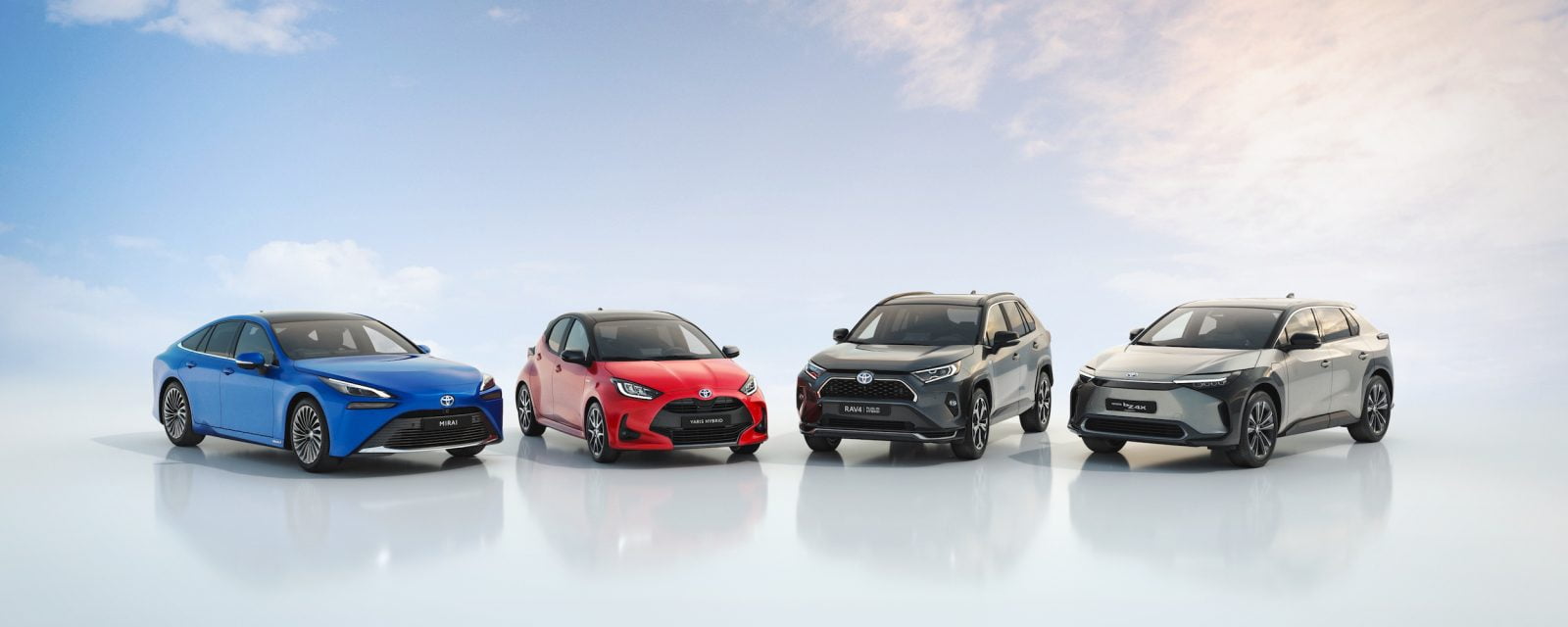
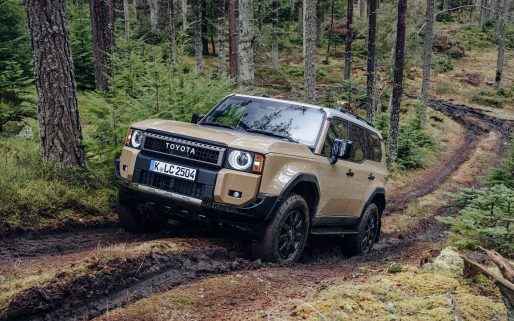
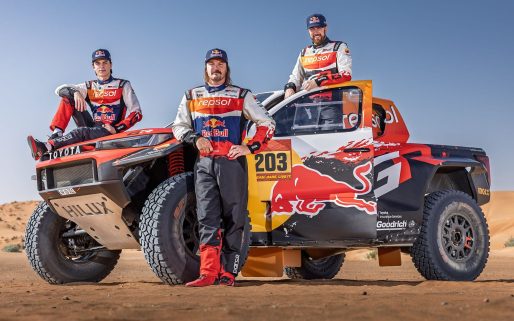
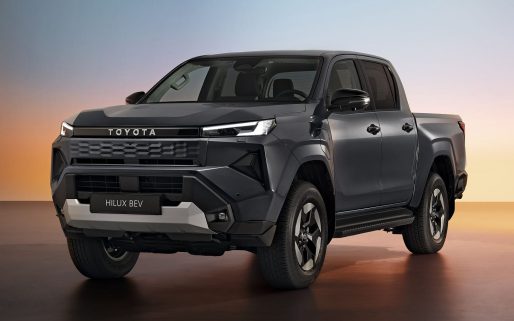
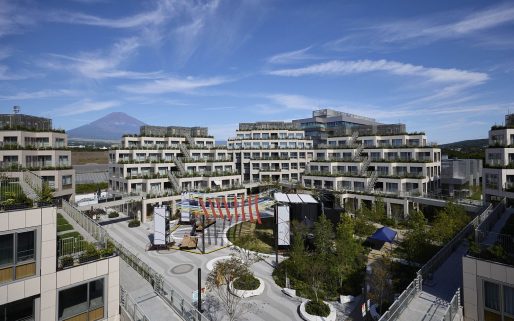
Always admired Toyota for their reliability, quality of manufacture and customer service.
Thank you for your kind works Frank.
🙂
Frank I’m driving a 1999 Toyota Corolla that has a clean bill of health, no rust, less than 95,000 miles and showing no signs of needing replacement. In a few months the car will turn 25 years old. That’s a testament to reliability, dependability, robustness and quality. I’ve had to scrap far younger vehicles from other marques due to corrosion, severe rust and maintenance costs.
Hope they become affordable, it’s still the price stopping people buying them
You need to employ a good designer and be bold as the 2 above are pig ugly.
You obviously HAVNT seen the new Rav 4 it’s amazing.
I have a C-HR Hybrid that’s great as well
I’ve got an all electric Rav 4. Best car ever. Hope you really focus more on the pure electrics, and just skip over hybrids. Not really needed, too complex and still burn fossil fuels.
Hi Eric,
Thank you for your positive comments. We take customer feedback very seriously and so will pass this on to our Product Team.
Thanks.
Your totally right. Just don’t see the point of hybrid. Just 2 systems to go wrong instead of one.
Hi Chris,
Thanks for your comment.
We have sold over 15,000,000 hybrids, showing that there is a clear demand for them.
They are also very reliable, and we offer up to 15 years extended cover of the hybrid battery because of our confidence in the technology.
There are more electrified options on the way.
Thanks.
süper
I wanted a direct replacement for my last vehicle (Toyota Urban Cruiser) which I really enjoyed driving, & had all the spec I required – apart from it being diesel. I panicked with all the government hype over fuels & purchased a Yaris Hybrid – but I do not like it as much as my Cruiser. Is the new Yaris Cross a direct replacement for the Urban Cruiser, it looks a bit CH-R ish, & is it smaller & compact?
Hi Chris,
Thanks for getting in touch. The Yaris Cross is an all-new vehicle, and doesn’t replace anything, although as an Urban Cruiser fan, we’re sure this will be right up your street! In terms of dimensions C-HR is 180mm longer, 30mm wider, 5mm higher and the wheelbase is larger by 80mm. Yaris Cross gets a 1.5 three cylinder hybrid powertrain, whereas the C-HR gets 1.8 and 2.0 litre four cylinder hybrid powertrains. If you’re interested, you should register your interest here: https://fal.cn/37JtV
A chr type styling , fully electric, great range 250+ range ..and most importantly affordable, get these points sorted and they definitely will be on a winner . If your looking at a test driver il be 1st in the queue.
Hi Kirk,
Thanks for your feedback! We hope to impress you soon.
All the best,
Toyota UK
I very much welcome the way that Toyota are thinking about the existing fleet of vehicles in the world. I would love to still be running my marvellous 2001 100 series Land Cruiser for years to come. If I can do that and very much reduce my carbon emissions then It will be a good result all round.
Hi there,
Thank you for your kind words.
We are glad to hear that your Land Cruiser is serving you well.
If you would be interested in receiving a Land Cruiser owners sticker, check out our blog post here – https://fal.cn/3hKz3
Thanks.
It’s a shame the stickers don’t include the 100 series. I’ll maybe wait another 15, 000 miles and get a 150,000 miles sticker. Keep up the good work folks. Toyotas are always the car in front.
Hi Hutton,
You can still get a sticker for being a Land Cruiser owner!
Please let us know if you would be interested.
Thanks.
Need to see the price of buying one, show the prices and deals.
What research is Toyota undertaking in the incorporation and development of Graphene into their battery technology, either as an enhancement to li-ion or in terms of Carbon based proprietary graphene technologies?
Hi Peter, thanks for your comment.
We have no information on this particular research at the moment.
Thanks.